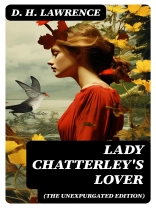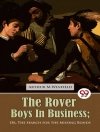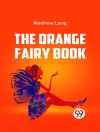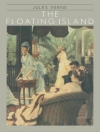D. H. Lawrence’s ‘Lady Chatterley’s Lover’ (The Unexpurgated Edition) offers a controversial yet profound exploration of love, sexuality, and the human condition against the backdrop of post-World War I society. Written in a lush, poetic style, the novel intertwines passionate prose with keen psychological insight, vividly depicting the clandestine affair between Constance Reid, an upper-class woman, and Oliver Mellors, a working-class gamekeeper. Its unexpurgated version restores the bold, frank discussions of sensuality that Lawrence originally intended, challenging societal norms and expectations regarding class and intimacy, a theme resonant with the burgeoning modernist movement of the early 20th century. D. H. Lawrence, an emblematic figure of modern literature, often drew from his own tumultuous experiences and radical ideas about relationships and individuality. Born in 1885 in Eastwood, England, Lawrence faced societal constraints that informed his exploration of sexuality and the quest for personal freedom, both themes prevalent in this novel. His own struggles with the conventional morality of his time ignited a desire to break free from societal shackles, which he vividly articulates through his characters. ‘Lady Chatterley’s Lover’ is essential reading for those intrigued by the complexities of human relationships and the forces that shape them. This unexpurgated edition invites contemporary readers to engage with Lawrence’s daring vision of love unbound by class restrictions, making it an indispensable addition to the canon of modern literature.
เกี่ยวกับผู้แต่ง
David Herbert Lawrence, known professionally as D. H. Lawrence (1885-1930), was an English writer renowned for his contribution to early 20th-century literature. Lawrence’s work was often marked by a profound exploration of the human psyche, relationships, emotions, and the desire for personal freedom, which unfolded against the backdrop of industrialized England. ‘Lady Chatterley’s Lover (The Unexpurgated Edition)’ stands as one of his most famous and controversial works, reflecting his literary talent at the intersection of passionate storytelling and socio-political commentary. The novel, first published privately in 1928, stirred public furor due to its explicit content and was subject to censorship and trials for obscenity. This only cemented Lawrence’s legacy as a writer unafraid to address issues of class disparity, sexuality, and the conflicts between modern industrial civilization and the natural world. Lawrence’s vivid prose and rich character analysis extend beyond ‘Lady Chatterley’s Lover’ to other notable works such as ‘Sons and Lovers’ (1913), ‘The Rainbow’ (1915), and ‘Women in Love’ (1920), all of which portray the complexities of human relationships in an authentically critical manner. Despite the controversies surrounding his art, Lawrence is esteemed as a literary craftsperson and is recognized for his contributions to the Modernist movement, both as a novelist and as an essayist.












